Ellsworth Kelly’s “Austin” brightens University of Texas campus
Resembling squares of lime, cherry, berry blue, and grape Jell-O, the glass-block windows of artist Ellsworth Kelly’s new artwork, Austin, are colorful, playful, and flat-out fun. You kind of want to slurp them up, or stick your finger in them to see if they jiggle.
A new and buzzed-about addition to the Blanton Museum collection on the University of Texas campus, Austin is a chapel-like structure designed by Kelly three decades ago for a private collector. It was never built, and Kelly never designed another structure. (He’s known primarily for his Color Field paintings and minimalist sculptures.) And then somehow it found a home — and funding — at UT, and Kelly consulted on its construction before he died, in 2015, at age 92 — 3 years before its completion.
It opened in February, and I’ve been eager to visit, having read articles about it in the New York Times and other publications. Last Friday I purchased my ticket at the Blanton and saw it for myself.
The smooth, curving limestone exterior resembles an igloo to many observers.
But its chunky, rounded walls and simple, cross-like form remind me of Georgia O’Keefe’s Ranchos Church.
Kelly was an atheist, and Austin is a secular structure — a temple of light and color rather than of God.
And yet it pays homage to the religious iconography of churches: their stained-glass windows (Austin has three made of colored glass), Stations of the Cross (Kelly’s are black-and-white marble panels hung along the interior walls), and altar cross (Kelly’s is an 18-foot-tall redwood totem sculpture).
Surprisingly, there is no seating inside, no benches from which to contemplate the prism-like light smeared across the walls and floor. You must stand and look.
Like a contemporary rose window, tumbling squares of colored glass illuminate one wing of the structure.
A many-pointed star is formed by the negative space inside the colored squares.
Opposite, a sunburst shape transforms sunlight into an aurora-like glow on the barrel-vaulted ceiling.
Back outside, I sat for a few minutes under the arcade of the Blanton and contemplated Austin. Aesthetically, I prefer the exterior of the building, with that beautiful smooth and curving limestone, to the minimalist interior. But the interior light patterns are intriguing, and it would be fascinating to see how the light and refracted color change throughout the day and the seasons. Lucky UT students who get to visit for free whenever the mood strikes them!
Overall I confess I’m more transported by James Turell’s Skyspace structures, which also focus purely on light, color, and space. There’s a Skyspace on the UT campus and another one, Twilight Epiphany, at Rice University in Houston, both of which I enthusiastically recommend for a sunrise or sunset viewing.
While I was on the UT campus, I also checked out this gravity-defying canoe sculpture, Monochrome for Austin by artist Nancy Rubins. What do you think it most resembles: a floral-like canoe bouquet or a rush-hour pile-up on the lake?
It reminds me of the old Waterloo Ice House on 38th Street, which for years was adorned with canoes hung on the outside of the building — a reminder of Austin’s beloved Barton Creek and Lady Bird Lake. Likewise, these canoes also evoke Lady Bird Lake for me, and I feel the sculpture would be more at home in downtown overlooking the lake.
I really enjoy going to see public art, especially two such intriguing pieces. It seems there are more and more works of art around town these days, including the new Stickwork sculpture by Patrick Dougherty at Pease Park. I’d like to see them all.
I welcome your comments; please scroll to the end of this post to leave one. If you’re reading this in a subscription email, click here to visit Digging and find the comment box at the end of each post.
_______________________
Digging Deeper: News and Upcoming Events
Calling all garden bloggers! You’re invited to register for the annual Garden Bloggers Fling tour and meetup, which will be held in Austin this May 3rd-6th! Click this link for information about registering, and you can see our itinerary here. Space is limited, so don’t delay. The 2018 Fling will be the event’s 10th anniversary, which started in Austin in 2008.
Join the mailing list for Garden Spark Talks! Inspired by the idea of house concerts, I’m hosting a series of garden talks by inspiring designers and authors out of my home. Talks are limited-attendance events and generally sell out within just a few days, so join the Garden Spark email list for early notifications. Simply click this link and ask to be added.
All material © 2006-2018 by Pam Penick for Digging. Unauthorized reproduction prohibited.


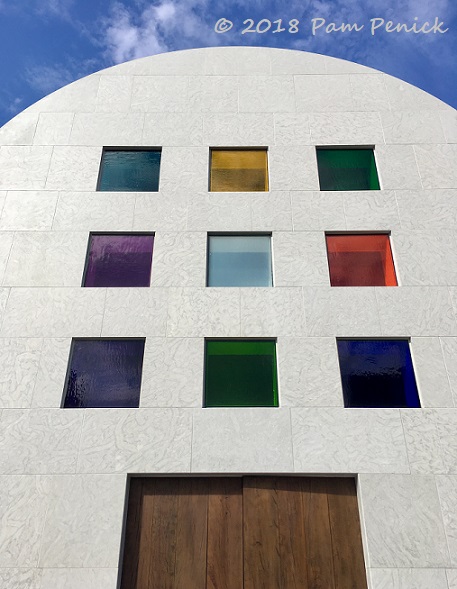
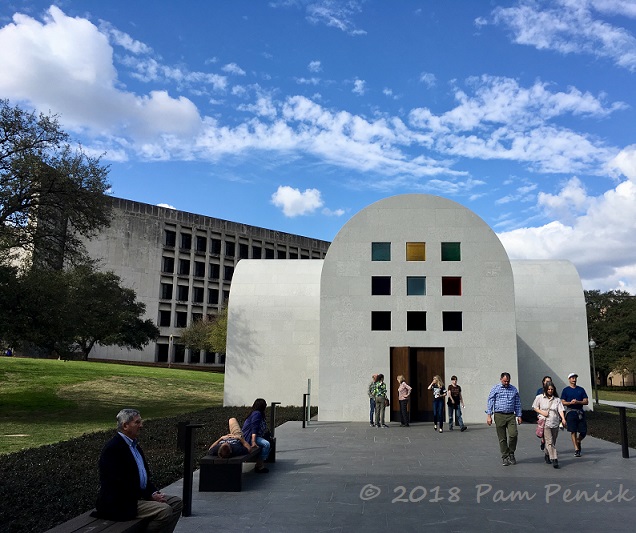
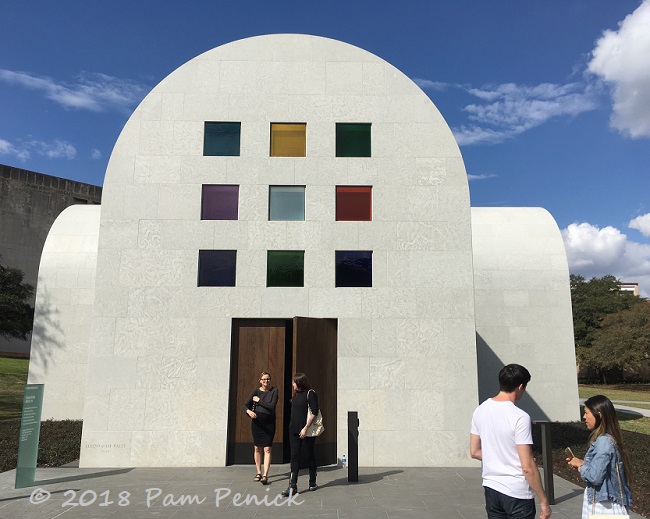
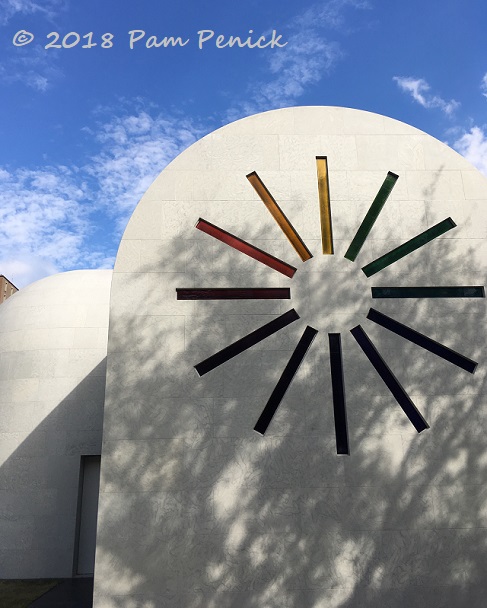
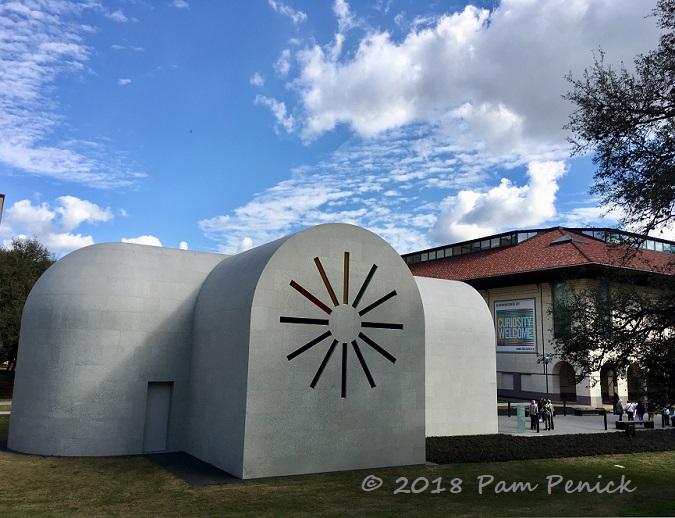
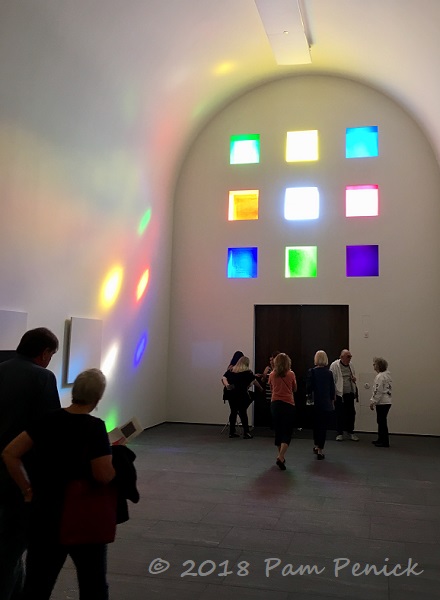
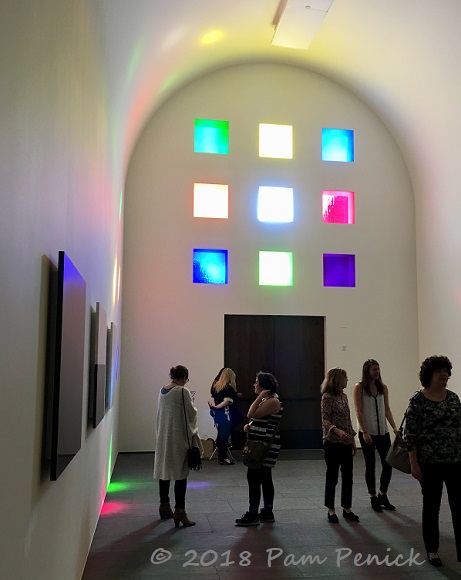
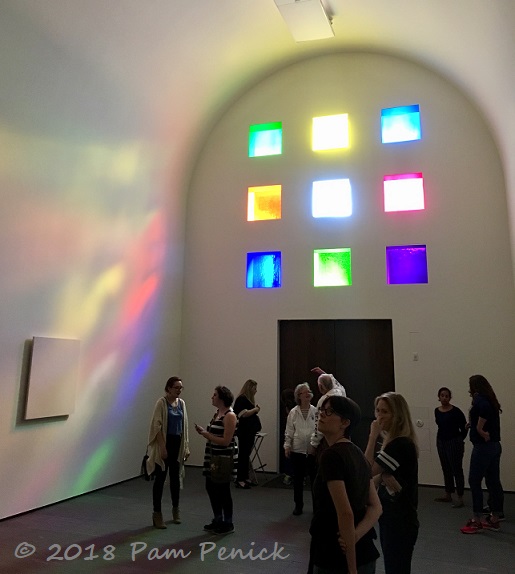
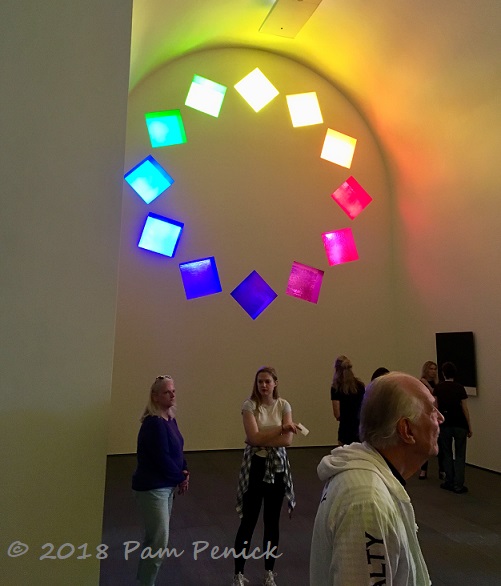
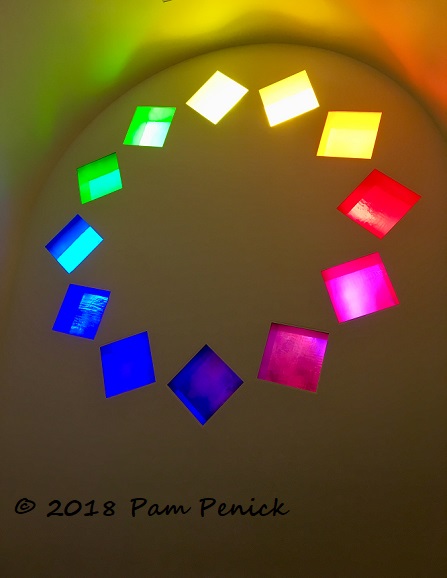
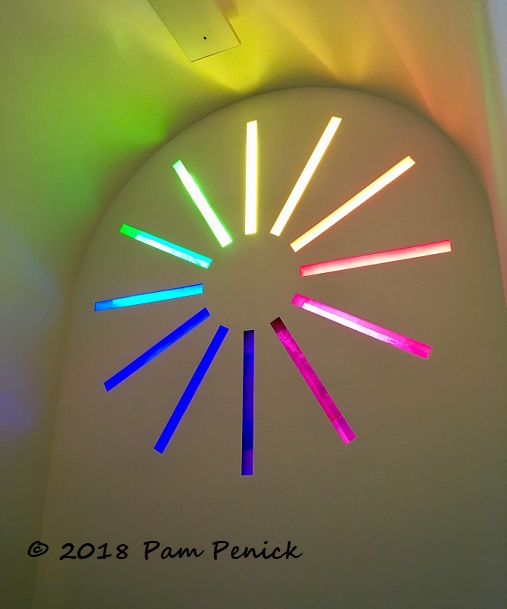
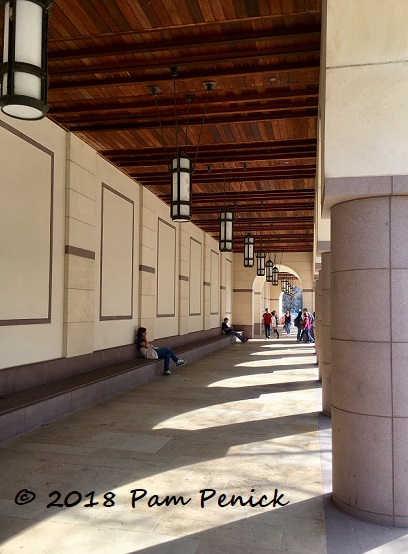
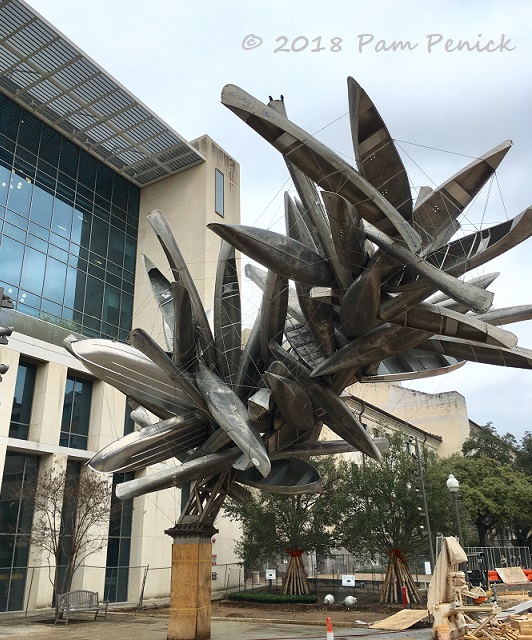
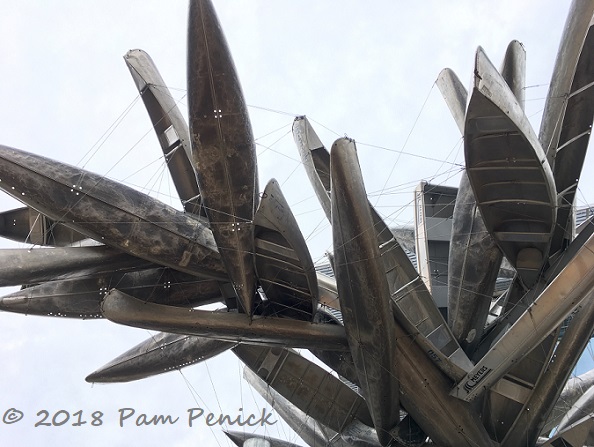
I also think the outside of the Austin is lovely. The inside is cold. I often think that about minimalist structures. The canoes look like some sort of tall yucca to me. After you mentioned a rush hour pile up that too came to mind. You are lucky to have such art to contemplate.
Now that you mention it, the canoe sculpture does sort of resemble a yuccca. Bristly! —Pam
Banana tree on steroids.
Ha! —Pam
The canoe sculpture puts me in mind of canoes piled up on a river bank by a flood.
Right? But artistically piled. —Pam
I love the light coming through the windows, but the buildings are a little stark for my taste.
It is definitely a minimalist structure. —Pam
I like the way Kelly picked up on aspects of church architecture and turned them into starlight and sunlight. The exterior seems very stark in contrast, and I’d need to see it in the landscape to have any opinion on whether it worked for me or not. The absence of any place to sit made me think of traditional Russian orthodox churches where there were no seats (I don’t know if that is still true) but those churches weren’t static, they were full of people bowing and straightening, constant movement.
I didn’t know that about Russian orthodox churches not having seats/pews — how interesting. I read Kelly was influenced by churches he visited in Europe during or after his service in WWII. —Pam
Lovely pictures! I saw the Austin for the first time on a bus ride this morning, so your post was very timely. I wonder if there are any plans to light it from the inside when it’s dark out. Seeing those colors illuminating from such a stark structure in the environment of state buildings would make me smile. I’m glad they “Texafied” it with the limestone instead of the stucco too.
I’d like to see it at night too, Peter, assuming it’s lit from within. And yes, the limestone is a great choice for the exterior. It has a squiggly pattern that’s very attractive. —Pam
I work right by the canoe sculpture. It was fascinating watching them install it. It took about two days, a crane, and a crew of three
I bet it was quite a production. Imagining how it’s all held together and upright is half the fun of it, I think. —Pam